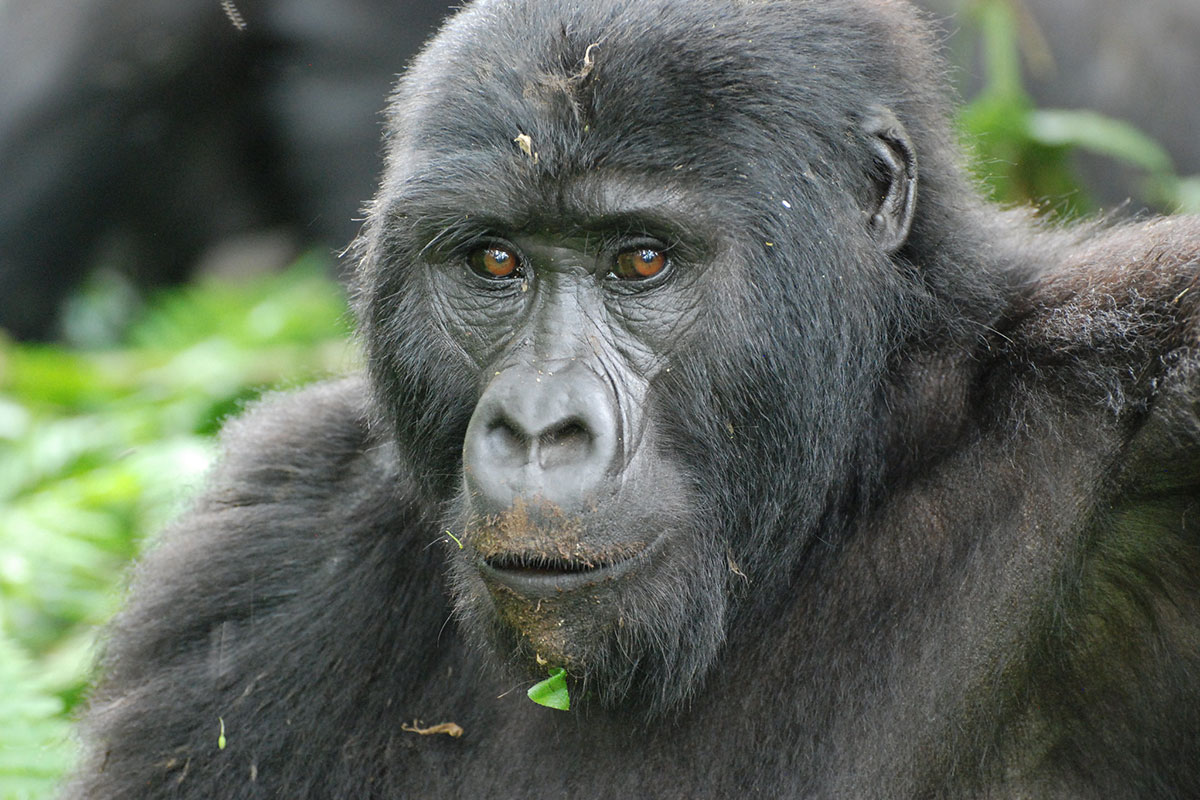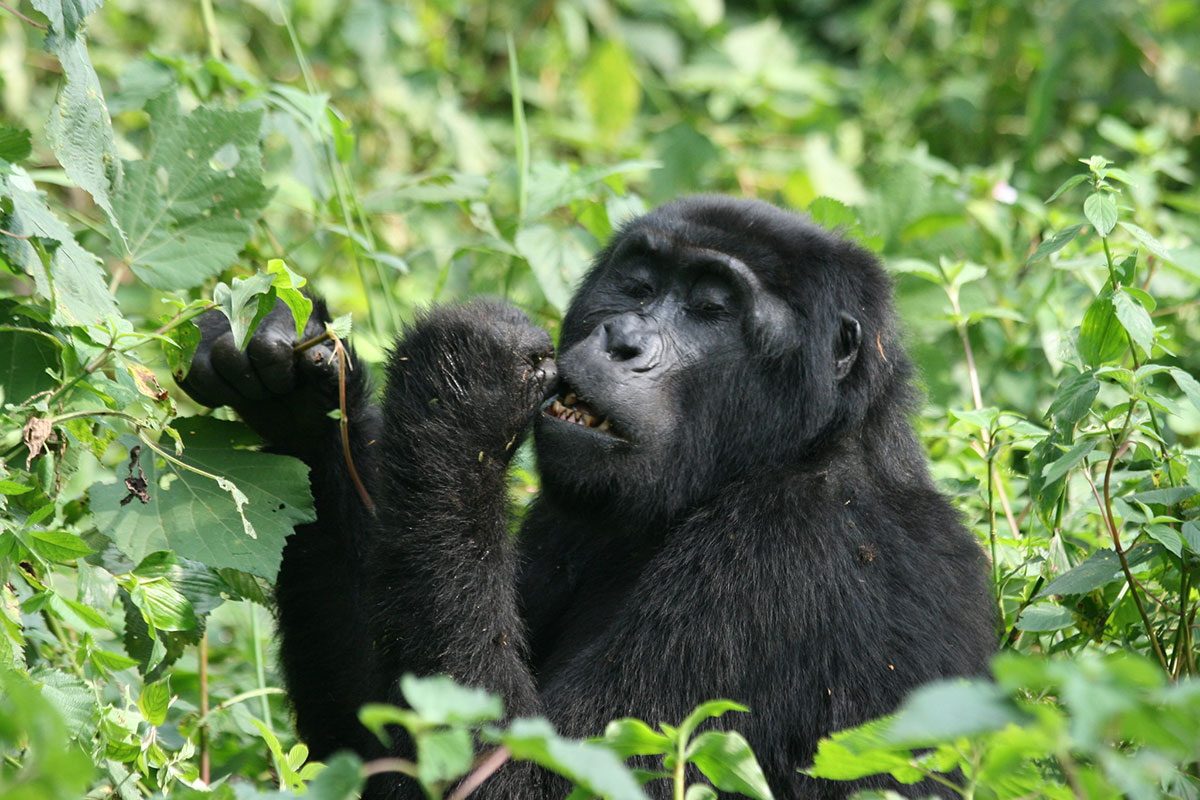
Student Budget Gorilla Treks in Uganda
January 8, 2025
UWA Gorilla Permit Cancellation Policy in Uganda
January 8, 2025List of Mountain Gorilla Families in Uganda
List of Mountain Gorilla Families in Uganda — Bwindi Impenetrable National Park, located in southwestern Uganda, is one of the most biologically diverse regions in the world. Spanning parts of Rukungiri, Kisoro, and Kabale Districts, the park features both lowland and montane forest ecosystems, making it a vital water catchment area for the surrounding region. It is home to nearly half of the world’s endangered mountain gorillas, alongside several other rare and endangered species. Bwindi is divided into four regions: Buhoma, Ruhija, Rushaga, and Nkuringo, each hosting several mountain gorilla families. Gorilla trekking has been available since April 1st, 1993, and permits should ideally be booked 3–6 months in advance. Below is a list of the notable mountain gorilla families in Uganda:
Nkuringo Gorilla Families
Nkuringo Gorilla Family – 14 members
Named after a local Rukiga word meaning “round hill,” the Nkuringo group was first habituated in 2004. Originally led by the silverback Nkuringo, who passed away in 2008, the group is now led by multiple silverbacks, including the two brothers Muhozi and Katungi, the latter of whom unfortunately died in infancy. The group is a key conservation success, having been instrumental in reducing crop damage and providing benefits to the local community.
Rushaga Gorilla Families
Nshongi Gorilla Family – 8 members
Nshongi was once the largest gorilla family in Uganda, but it split in 2012 due to a large number of silverbacks competing for leadership. Despite the split, the group remains led by the silverback Nshongi. It is located in Rushaga, on the Nkuringo side of Bwindi. This family includes 1 silverback, 4 blackbacks, 2 adult females, and 1 infant.
Mishaya Gorilla Family – 7 members
Mishaya left the Nshongi group in 2010 to form his own family. Known for his feisty nature, Mishaya has a small but dynamic group that includes 1 silverback, 3 adult females, 2 infants, and 1 sub-adult.
Kahungye Gorilla Family – 18 members
Named after the hill where the group resides, Kahungye has been a popular group for tourists since 2011. This lively group is led by the silverback Gwigi and is composed of 2 silverbacks, 3 blackbacks, 4 adult females, 1 sub-adult, 3 juveniles, and 5 infants.
Busingye Gorilla Family – 11 members
Busingye was formed in early 2012 when members of the Kahungye group split off. The group now includes 1 silverback, 4 adult females, 1 sub-adult, and 3 infants.
Bweza Gorilla Family – 11 members
Formed from a breakaway of the Nshongi group, Bweza is a smaller family that has become established with 1 silverback, 4 blackbacks, 4 adult females, 2 juveniles, and 2 infants.
Buhoma Gorilla Families
Mubare Gorilla Family – 11 members
Mubare is the oldest habituated group in Bwindi and was once the most popular trekking group. Though the group has faced challenges, including the death of the dominant silverback Ruhondeza in 2012, Mubare has bounced back with 11 members, including the new silverback.
Habinyanja Gorilla Family – 17 members
Habinyanja was once a part of a larger group that included gorillas from outside the park, but it separated over time. Led by the silverback Rwatsigazi, the group includes 1 silverback, 4 adult females, 4 sub-adults, 2 juveniles, and 6 infants. This family is known for its dramatic dynamics and lively interactions.
Rushegura Gorilla Family – 15 members
Rushegura is led by the silverback Mwirima, who was originally part of the Habinyanja group. The family is known for its high reproductive potential, with multiple adult females regularly mating. The family consists of 2 silverbacks, 3 adult females, 2 blackbacks, 3 juveniles, and 5 infants.
Ruhija Gorilla Families
Bitukura Gorilla Family
- Family size: 11 individuals
- Composition: 4 silverbacks, 1 sub-adult, 3 females, 1 blackback, 2 juveniles, and 1 infant.
The Bitukura family is a peaceful group located in the Ruhija area of Bwindi. Named after the Bitukura River, where the gorillas were first spotted, this family is known for its strong bonds and “group meetings,” where members gather together. The habituation process for this group was relatively quick, taking just 15 months instead of the usual two years. The family includes four silverbacks and is a delight to observe, particularly due to the playful antics of the young gorillas. Ruhija is about a 1.5-hour drive from Buhoma.
Oruzogo Gorilla Family
- Family size: 17 individuals
- Composition: 2 dominant silverbacks, several females, and infants.
The Oruzogo family, one of the newer groups to be opened to tourism, is located between Buhoma and Ruhija. Led by the dominant silverback Tibirikwata, the family includes two recently born babies. This group, which can be found in the Ruhija area (approximately 2.5 hours from Buhoma), is thriving and offers an exciting opportunity for visitors to witness a diverse range of gorilla behaviors.
Important Notes for Visitors
To protect both tourists and gorillas, strict guidelines must be followed during gorilla trekking. These rules ensure the safety of the animals, as gorillas are highly susceptible to human diseases, and their natural behavior can be disrupted by close human interaction.
- Illness: Visitors who are unwell may be refused entry to protect the gorillas.
- Group Size: Only 8 visitors are allowed per gorilla group to minimize stress.
- Age Limit: Visitors must be at least 15 years old to reduce the risk of childhood diseases.
- Time Limit: Visitors can only spend one hour with the gorillas to prevent stress and disruption.
- Flash Photography: Flash photography is not allowed as it can startle the gorillas.
- Distance: Maintain a distance of at least 7 meters from the gorillas. If they approach, retreat slowly.
- Group Behavior: Visitors should stay in a tight group and avoid spreading out.
- Posture: It’s best to crouch or sit to avoid intimidating the gorillas.
- Body Language: Avoid raising your hands, pointing, or making direct eye contact, as this may be seen as a threat.
- Vegetation: Do not clear vegetation to improve visibility; guides will assist with this if necessary.
- Silverback Behavior: If a silverback displays aggression (e.g., chest beating), remain calm and still. Do not run.
- Food and Drink: Eating, drinking, or smoking is not permitted within 200 meters of the gorillas.
- Noise: Keep noise to a minimum. Whisper and avoid making sudden movements.
- Sneeze or Cough: Always turn away and cover your nose and mouth to avoid spreading germs.
- Waste Disposal: All human waste must be buried, and a machete is available from guides for this purpose.
- Littering: Do not leave any litter behind; it can harm the environment and wildlife.
Excursia Adventures: Your Gorilla Trekking Partner
At Excursia Adventures, we pride ourselves in crafting unforgettable gorilla trekking experiences in Uganda and Rwanda. Our safaris combine wildlife exploration with eco-friendly, high-end adventure tours that prioritize conservation and local community support. In addition to gorilla trekking, we offer a variety of activities, including chimpanzee trekking, Big 5 safaris, mountain hiking, boat cruises, and cultural encounters across Africa’s most iconic destinations, such as Tanzania, Kenya, Botswana, and Namibia.
Our commitment to preserving biodiversity and uplifting local communities makes us a top-rated choice for adventure enthusiasts worldwide. Contact us today to book your next adventure and learn more about the Mountain Gorilla Families in Uganda.




